‘Fail Safe’ At 60: The Pentagon Hated This Classic Suspense Drama About Nuclear Catastrophe
The Pentagon sabotaged this film, which suggested that not even President Henry Fonda could prevent a nightmarish accident.
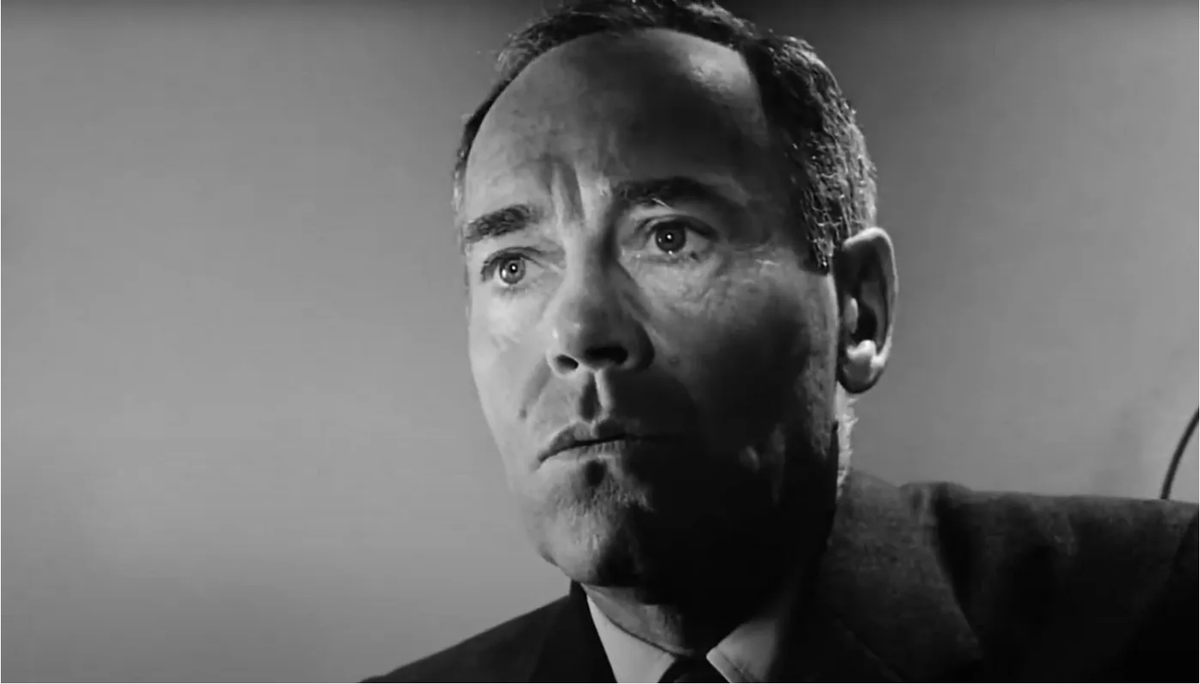
The following article was originally published as part of Dissenter editor Kevin Gosztola's movie publication The Wide Shot
Within director Sidney Lumet’s film “Fail Safe” lies an idealism that challenges nuclear warfare and the folly of great power competition.
A catastrophic military accident forces the President, played by Henry Fonda, to acknowledge that the United States and the Soviet Union let the Cold War nuclear arms race get out of hand. The President declares, “What we put between us, we can remove.”
The film premiered at the New York Film Festival on September 15, 1964, and opened in the U.S. on October 7. It was based on a book by Eugene Burdick and Harvey Wheeler, which Walter Bernstein adapted for the screen. Bernstein was blacklisted in the 1950s and understood the fear and paranoia fueled by the Cold War quite well.
Pentagon officials despised the movie and sabotaged the production. “The incidents in ‘Fail Safe’ are deliberate lies!” cried General Curtis LeMay, a professed war criminal who firebombed Tokyo. “Nothing like that could happen.”
More well-known is the fact that director Stanley Kubrick did not want Lumet’s film to be released before “Dr. Strangelove or: How I Learned To Stop Worrying and Love the Bomb,” which was adapted from a book called “Red Alert.” Kubrick and the book’s authors filed a frivolous plagiarism lawsuit against the authors of “Fail-Safe” that resulted in a settlement.
Kubrick’s bitter act guaranteed that “Fail Safe” would forever exist in the shadow of his movie. As part of the settlement, Columbia Pictures took ownership of the “Fail Safe” film. Columbia also owned “Dr. Strangelove,” and the studio ensured that Kubrick’s nuclear war satire was released before “Fail Safe.”
Lumet recalled, “We opened to no audience whatsoever. You have to look silly after the comedy version has come out.”
“The two movies, ‘Strangelove’ and ‘Fail Safe,’ have everything in common in terms of storyline, and nothing in common in terms of character, intent, or style,” Lumet contended.
Indeed, in “Dr. Strangelove,” the characters are so stuck in their fear, paranoia, and jingoism that the audience is primed to laugh at them for sparking a doomsday event. But “Fail Safe” takes a different approach, presenting viewers with several characters who make a righteous and sincere effort to disentangle themselves from the war machine that may destroy the world.
Not Even Henry Fonda As The President Can Stop This Catastrophe
A little over a week before “Fail Safe” was released, President Lyndon B. Johnson’s re-election campaign aired the “Daisy” advertisement. In the shocking commercial, a white girl counts daisy petals as she pulls them off the flower. Once she reaches 10, a countdown for a nuclear attack begins. The camera zooms into her left eye that then cuts to a superimposed shot of a detonating nuclear weapon. A mushroom cloud fills the screen.
“These are the stakes. To make a world in which all of God’s children can live, or to go into the dark. We must either love each other, or we must die,” Johnson states. The ad closes with a voiceover that insists the “stakes are too high” for any American to stay home and not vote.
The message from LBJ’s campaign was that his opponent Barry Goldwater could not be trusted to prevent the world from experiencing total annihilation. Yet “Fail Safe” showed even a nuclear catastrophe could happen even if a supposedly level-headed president was in power.
Fonda had appeared in a number of films as a charismatic, good-natured, and principled character — Abraham Lincoln in “Young Mr. Lincoln” (1939), Tom Joad in “Grapes of Wrath” (1940), Lieutenant Roberts in “Mister Roberts” (1955), Juror 8 in “12 Angry Men” (1957) (also directed by Lumet), Robert A. Leffingwell in “Advise and Consent” (1962), and William Russell in “The Best Man” (1964).
“Fail Safe” works well because it builds on Fonda’s on-screen persona. Audiences had seen Fonda perform as a past U.S. president , pursue a high-ranking position in the executive branch of the U.S. government, and run for U.S. president. Now Fonda actually was the U.S. president. If anyone could save the world, it would be Fonda.
In an underground missile silo in Omaha, Nebraska, General Bogan (Frank Overton) has an exchange with the President about why a group of bombers received the wrong signal and took off to attack Moscow. Bogan is trained to think that the Russians must be behind the incident. However, the President, who is in a bunker in Washington, D.C., sensibly posits that the “fail-safe mechanism” might have given the pilots a go signal as they were trying to make radio contact with Bogan but could not reach him.
The President recognizes that in order to prevent the Soviet Union from being bombed he will have to authorize the shoot-down of those U.S. fighter jets. Tight close-up shots hammer home the weight of this decision. He soon calls the Soviet Premier with Buck, a translator played by Larry Hagman who gives a magnificent performance.
“I want to know what you think he’s feeling,” the President tells Buck just before informing the Soviet Premier that a group of U.S. fighter pilots are about to drop 20-megaton bombs on his country. He also says no matter what the Soviet Premier does at least one U.S. warplane will get through and bomb Moscow.
The scenes between the President and Soviet Premier are remarkable in that the two leaders exchange information about the military capabilities of their countries that is clearly sensitive and top secret. Yet with U.S. fighter jets in Soviet territory, there is no time for posturing as enemy states. The President authorizes any U.S. military cooperation necessary so that the Soviet military can shoot down the U.S. warplanes, even telling the Soviet Premier how to blow up the U.S. military’s air-to-air missiles.
When the two leaders are left with no options to stop the bombing of Moscow, the President orders an attack on the Empire State Building in New York. Only by inflicting a similar holocaust on a major American city does the President believe that the U.S. can atone for what has happened. (In fact, the President knows that his wife is in New York and still goes through with the strike.)
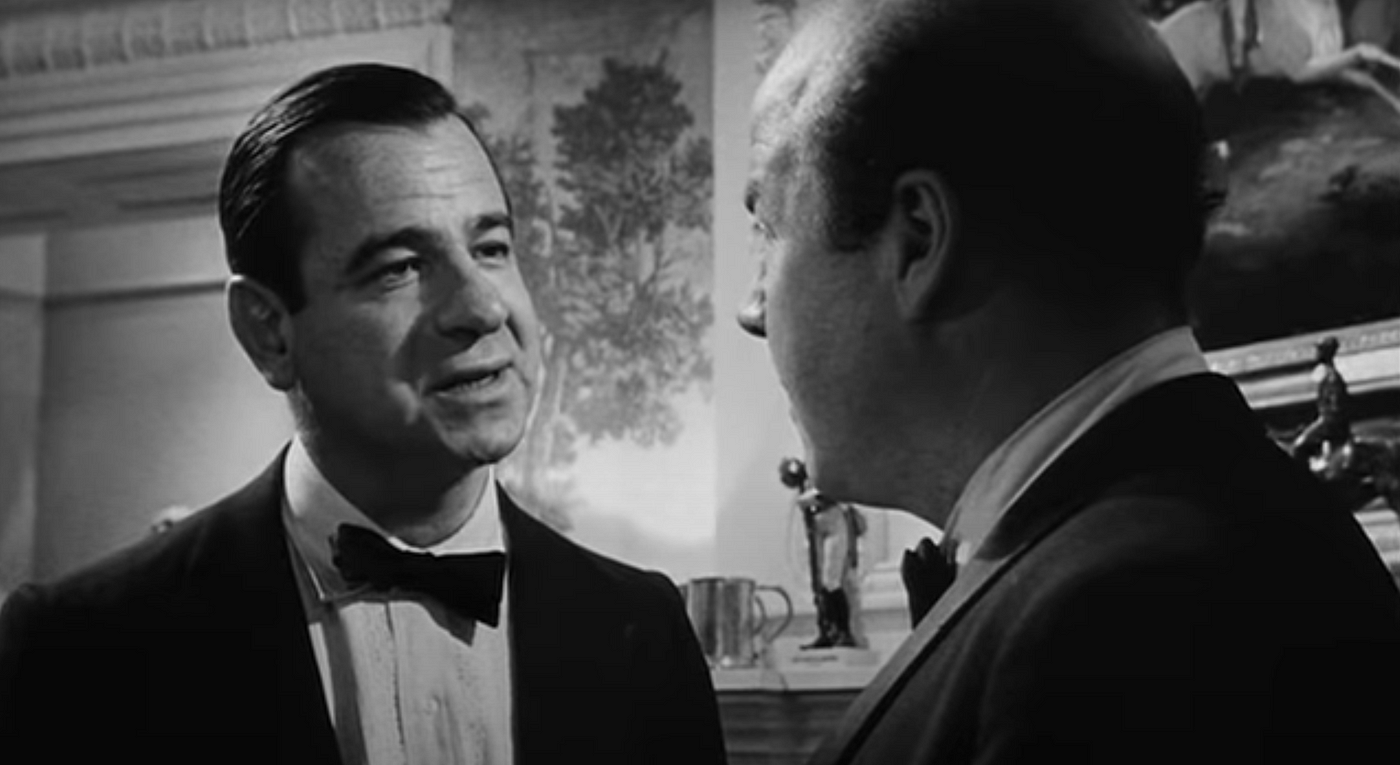
Making A Game Out Of Nuclear War
Embodying the moral depravity of Cold War thinking is Walter Matthau’s character Dr. Groeteschele. The political scientist and civilian adviser to the Pentagon was based upon Herman Kahn, a strategist and theorist for the RAND Corporation who wrote “On Thermonuclear War” in 1960. (Kahn also partly inspired the character of Dr. Strangelove.)
Bernstein and Lumet introduce Groeteschele through a party, where the professor leads a group of Washington elites in a glib discussion of civilian deaths in a nuclear war. Groeteschele believes society should be prepared for 60 million deaths. All wars have winners and losers. “I am a political scientist who would rather have an American culture survive than a Russian one.”
Such parlor chatter about a nuclear holocaust is “fun” for Groeteschele, though it is 5:30 a.m. He has to give a morning lecture in the war room for the Pentagon’s Strategic Air Command (SAC) and leaves with Ilsa Wolfe (Nancy Berg), a socialite who flirtatiously needles the professor.
“We all know we’re going to die, but you make a game out of it. A marvelous game that includes the whole world. You make it seem possible,” Wolfe says. She adds, “You make death an entertainment. Something that can be played in a living room.”
As Groeteschele begins his lecture, he acknowledges that an unidentified flying object has appeared on the military radar. He jokes about “accidental war” and articulates his ideas on limiting nuclear war. The presentation outrages Brigadier General Warren Black (Dan O’Herlihy). “We’re setting up a war machine that acts faster than the ability of men to control it,” Black warns.
The professor’s retort is to “toughen the men.” Even if the U.S. military believes that the Russians accidentally launched a “megaton missile,” shouldn’t the U.S. military retaliate with every possible weapon?
Black is a military man of conscience, who ultimately sacrifices himself in a valiant act of resistance to the war machine that he has perpetuated. And while O’Herlihy’s character bookends the film and may arguably be the movie’s true hero, the heartfelt performance that he gives is upstaged by Fonda as the President.
Later, in a twisted but arresting scene largely owed to Matthau’s performance, Groeteschele makes the case to the President for allowing the U.S. fighter jets to bomb Moscow. “The Russian aim is to dominate the world. They think that communism must succeed eventually if the Soviet Union is left reasonably intact. They know a war would leave the Soviet Union utterly destroyed.”
“They know we might have a doomsday system. Missiles that will go into action days, even weeks, after a war is over and destroy an enemy even after the enemy has destroyed us,” Groeteschele continues. “These are Marxist fanatics, not normal people. They do not reason the way you reason. They’re not motivated by human emotions, such as rage and pity. They are calculating machines. They will look at the balance sheet, and they will see that they cannot win.”
Whistleblower and nuclear war planner Daniel Ellsberg was Kahn’s colleague at RAND. According to Ellsberg, Kahn “had argued that to make a credible first-strike threat, [the U.S.] had to be prepared to show that we would survive a retaliatory strike with our fallout shelters, or at least believe that we would. To do that you had to act as if you believed — as Kahn did — that shelters would make all the difference, and you had to encourage people to build them.”
The nuclear war theorist conceived of a “Doomsday Machine” that could destroy all human life as an automated response to a nuclear attack. Yet even Kahn understood that developing a system was “undesirable.”
Also, in 1961, Kahn did not think a “Doomsday Machine” could be built. Or that the U.S. or Soviet Union would consider developing such a machine.
Contrary to Kahn’s assertions, Ellsberg wrote, “[A]n American Doomsday Machine already existed in 1961 — and had for years — in the form of pre-targeted bombers on alert in the Strategic Air Command (SAC), soon to be joined by Polaris submarine-launched missiles. Although this machine wasn’t likely to kill outright or starve to death literally every last human, its effects, once triggered, would come close enough to that to deserve the name Doomsday.”

Pentagon Waged A Campaign Against The Film
Donald Baruch was the Pentagon’s primary liaison with Hollywood for four decades. In 1964, as journalist David Robb highlighted in his 2004 book “Operation Hollywood: How the Pentagon Shapes and Censors the Movies,” Baruch sabotaged the film.
Not only did Baruch refuse to grant the production “access to stock footage of U.S. warplanes,” but he also had the Pentagon pressure “commercial film libraries not to give [Lumet] any footage of American bombers in flight.”
“I needed footage of bombers, and this is footage that’s available from rental houses which had the stuff,” Lumet recalled. However, the “rental houses” yielded to the Pentagon, which meant that the production had to bootleg a shot of a Convair B-58 Hustler that they could use over and over again.
It was not the first time that the government had refused to cooperate with a Hollywood production. What was “extroardinary was that the Pentagon “cut off the rental houses,” Lumet declared. That pushed “Fail Safe” to portray the invasion of Russian airspace in a much more simple manner like it was a stage play.
Like with “Dr. Strangelove,” Lumet was unable to get any photographs from Strategic Air Command that would help the production develop a realistic set. Production designer Albert Brenner ultimately created the interior of SAC by constructing mainframe computers with boxes that were affixed with discs. The radar screen was hand-drawn and animated.
Columbia attached a Pentagon disclaimer at the end of the film that further irritated the filmmakers.
“The producers of this film wish to stress that it is the stated position of the Department of Defense and the United States Air Force that a rigidly enforced system of safeguards and controls insure that occurrences such as those directed in this story cannot happen,” the disclaimer stated.
But the commander of SAC from 1948 to 1957 was none other than war criminal General Curtis LeMay.
Of course, LeMay thought the movie was a bunch of lies. He opposed the development of smaller bombs for “limited war” because he wanted the Pentagon to always have one nuclear warhead that was big enough to wipe out the entire population of Russia.
The United States and North-Atlantic Treaty Organization's encirclement of Russia and Russia's subsequent invasion of Ukraine have perpetuated a war that now sees two nuclear powers risking catastrophe yet again. President Joe Biden even authorized Ukraine to launch attacks deep inside of Russia.
What is between the U.S. and Russia in 2024 should be removed, like Fonda's President character suggests in the movie. However, the actions of U.S. officials indicate that a "Fail Safe"-type accident is more likely to occur before they ever take steps to coexist and disarm.

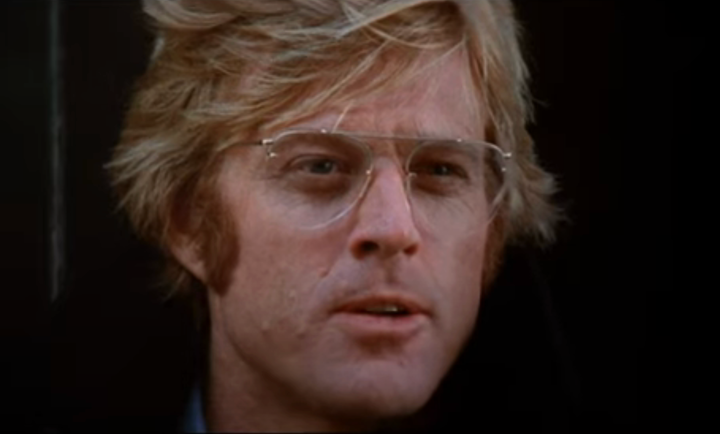
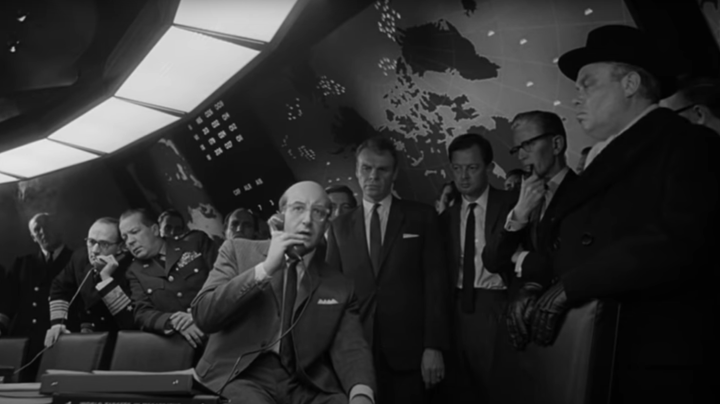
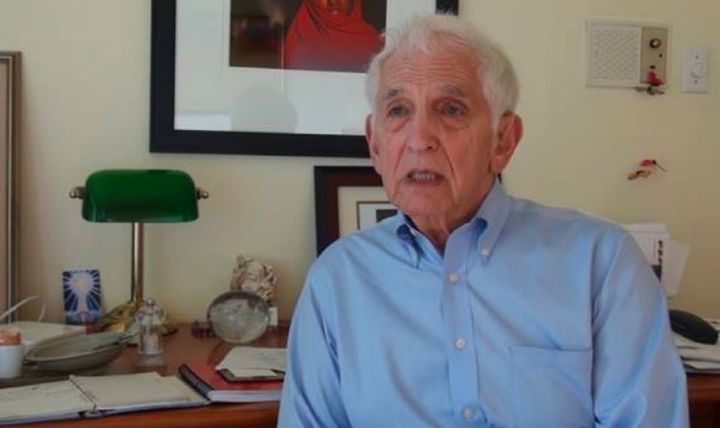
Comments ()